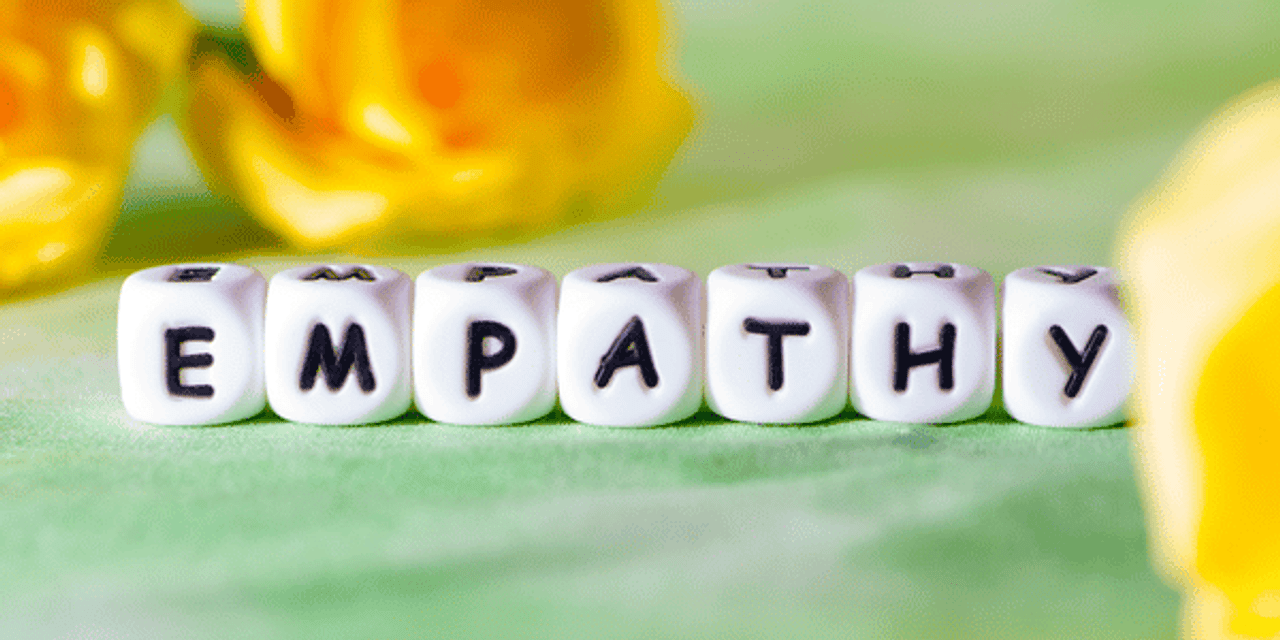Understanding Empathy and Autism (Expert Article)
Many people believe that autistic individuals lack empathy. This is not true.
The reason this misconception never seems to get discarded may be due, in part, to its deep historical roots.
Early descriptions of autism and autistic individuals, dating as far back as the 1930s, tended to emphasize the social and communication difficulties associated with the condition. This helped foster an assumption that autistic individuals lacked empathy. Even as recently as the early 2000s, research suggested autistics may not be as strong in empathy and perspective-taking skills when compared to their non-autistic peers.
Today, however, thanks to advancements in research, we have a much better understanding of empathy, its makeup, and its relationship to autism. Historically, empathy was defined and explained as a singular thing or concept. We now know it is much more nuanced, with multiple components and layers. And, like everyone else, autistic individuals possess a diverse range of abilities when it comes to expressing various forms of empathy. For example…
Cognitive empathy refers to one’s perspective-taking ability (putting yourself in someone else’s shoes. This type of empathy helps you imagine what another person is thinking and feeling. To support our understanding of the cognitive component of empathy, we rely on nonverbal cues to glean another person’s emotional state (e.g., their facial expression, body posture, gestures) or use context to infer their state (i.e., clues from the environment around the person). While this cognitive component of empathy can be challenging for autistic individuals, they appear to do as well or better than their neurotypical peers when it comes to the next component of empathy.
Affective empathy refers to one’s emotional response to another person’s thoughts and feelings. As such, when they are aware that someone is suffering, autistic people generally have an emotional response whereby they feel and share the person’s emotions. Interestingly, this is the exact opposite of what you would expect in an individual with antisocial personality disorder. These people tend to have strong cognitive empathy, which allows them to deceive and manipulate others, with low affective empathy, which negatively impact their ability to genuinely care about how their behavior impacts others.
A third aspect of empathy that has become much more understood in the past decade is something called the double empathy problem. This aspect suggests that there is a mutual lack of understanding between autistic and non-autistic individuals. As such, autistic people have trouble understanding non-autistic people but are better able to understand other autistic people, and vice versa.
Various studies have shown support for this theory. One study in 2019, for example, paired people for an unstructured, five-minute conversation with an unfamiliar person and then looked at the quality of the interaction as well as the lasting impressions. Non-autistic individuals expressed interest in future interactions with other non-autistic individuals, and autistic individuals expressed a preference for future interactions with other autistic individuals, suggesting that each group “vibed” best with others who shared a similar profile.
Another study in 2020 used the game of telephone to show that a group of autistic people performed as well as a group of non-autistic people, while a mixed group had more difficulties and lost more details of the story they were passing along.
Fortunately, empathy is a skill that can be taught and practiced. To support a child’s cognitive empathy, try the following:
- Teach them about “hidden social rules.” For example, if someone is facing away from your child and has their arms crossed, they may not be interested in engaging. Alternatively, if a child on the playground approaches your child to show them a toy, they may want to play.
- Reflect on recent experiences. Following a trip to the playground, have a discussion about any awkward moments or situations. What “hidden social cues” did other children use? Did your child use any? If so, did the way others perceive that cue align with their intention?
- Turn family tv/movie time into a learning opportunity. Pause to discuss any “hidden social cues” that may be affecting the characters or plot.
For more guidance on how you can support autistic children, check out our new book Different Thinkers: Autism. Using child-friendly language and illustrations, readers learn how their brains work, ways to identify their individual strengths and challenges, and strategies they can use to achieve their goals.
So, the next time you hear someone say autistic individuals struggle with empathy, remember this: empathy is a nuanced, multi-layered construct, and how well we exercise it depends on who we are interacting with.
Sources
Morrison, K.E., DeBrander, K.M., Jones, D.R., Faso, D.J., Ackerman, R.A., and Sasson, N.J. (2019). Outcomes of real-world social interaction for autistic adults paired with autistic compared to typically developing partners, Autism, 24, 1067-1080.
Crompton, C.J., Ropar, D., Evans-Williams, C.V.M., Flynn, E.G., and Fletcher-Watson, S. (2020). Autistic peer-to-peer information transfer is highly effective, Autism, 24(7).
New on the Blog
Self-Care Strategies That Stick: A Blueprint for School Counselors (Part 3)
Part 3: How to build and sustain your personal self-care system Develop a self-care system that work...
Self-Care Strategies That Stick: A Blueprint for School Counselors (Part 2)
Part 2: Eight categories that comprise true self-care In recent years, self-care has become a popula...
Self-Care Strategies That Stick: A Blueprint for School Counselors (Part 1)
Welcome to this three-part blog series on self-care. In Part 1, we’ll explore why self-care is...
The Library: One of Education’s Most Valuable (and Overlooked) Allies
Nothing gets a college student’s attention like the word “free!” As some...
Six Steps to Safeguarding your Child’s Mental Health
Is there a Brad in your family? Brad is a typical middle school kid who just wants to fit in. He doe...
Peer Mediation Programs: Good for Students, Good for Schools
There’s something magical about giving power to students to resolve peer conflicts. No longer...







